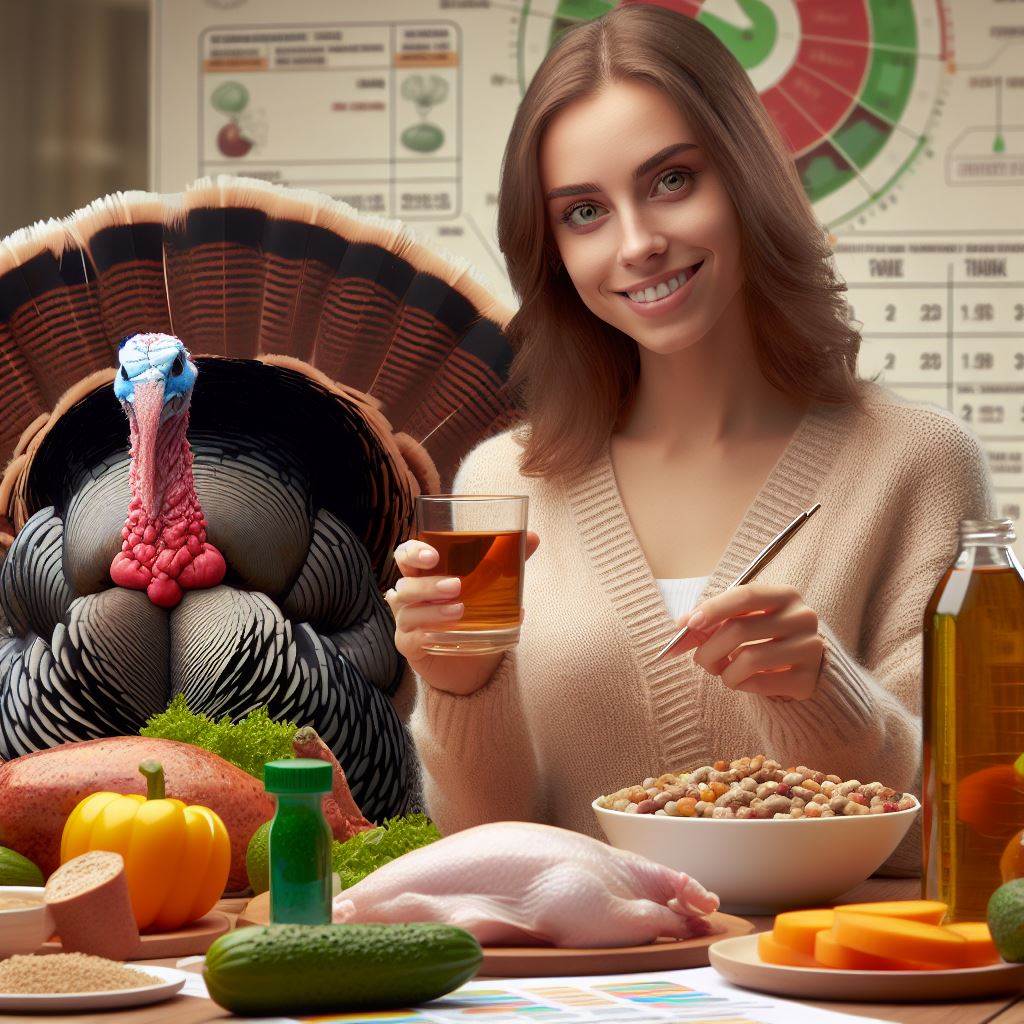Introduction
Let’s Explore Deer Farming Feed Strategies for Growth & Health
Deer farming has gained significant popularity in recent years as a lucrative and sustainable practice.
As the demand for deer products like meat, antlers, and velvet continues to rise, more and more farmers are venturing into this industry.
However, the success of deer farming heavily relies on the implementation of effective feed strategies to ensure the growth and health of the animals.
Importance of feed strategies for growth and health in deer farming
One of the primary reasons why feed strategies are crucial in deer farming is to promote proper growth.
Deer require a balanced diet rich in essential nutrients, vitamins, and minerals to grow rapidly and develop strong bones and muscles.
Providing a well-planned feed strategy ensures that deer receive the necessary nourishment to reach their genetic potential.
Furthermore, feed strategies play a vital role in maintaining the overall health of deer.
A diet tailored to their specific needs helps prevent common health issues like malnutrition, digestive disorders, and weakened immune systems.
Adequate nutrition also contributes to the reproductive health of deer, ensuring successful breeding and healthy offspring.
Therefore, implementing effective feed strategies is of utmost importance in deer farming.
Proper nutrition promotes optimal growth, enhances overall health, and ensures the sustainability and profitability of this industry.
By providing a well-balanced diet, deer farmers can ensure the well-being and success of their herds.
Understanding the dietary needs of deer
Identification of key nutrients required by deer
Deer require a balanced diet to support their growth and overall health. Here are the key nutrients they need:
- Protein: Protein is essential for deer as it supports muscle development and repair. It is crucial for antler growth during the summer months. High-quality protein sources include legumes, nuts, and leafy greens.
- Energy: Deer need a sufficient supply of energy to fuel their daily activities, especially during periods of high stress such as breeding season or extreme weather conditions. Carbohydrates and fats provide the necessary energy for deer.
- Minerals: Minerals play a vital role in the health of deer. Calcium and phosphorus are essential for bone growth and development. Other important minerals include magnesium, potassium, and selenium, which support various physiological functions.
- Vitamins: Deer need a range of vitamins to maintain their overall well-being. Vitamin A promotes healthy vision, vitamin D helps in calcium absorption, and vitamin E supports immune function. B vitamins aid in energy production and metabolism.
Explanation of how these nutrients support growth and health in deer
- Protein: Adequate protein helps deer develop strong muscles, promoting agility and endurance. It also contributes to antler growth, crucial for breeding success and establishing dominance in males.
- Energy: Sufficient energy intake ensures deer have the stamina to engage in daily activities such as feeding, escaping predators, and mating. It also supports thermoregulation during extreme weather conditions.
- Minerals: Calcium and phosphorus are essential for proper bone development, ensuring deer have a robust skeletal structure. Magnesium helps regulate metabolic processes, while potassium maintains proper fluid balance. Selenium is necessary for immune function and overall health.
- Vitamins: Vitamin A supports healthy vision, particularly important for deer residing in dimly lit areas. Vitamin D aids in calcium absorption, which is pivotal for bone health. Vitamin E strengthens the immune system, protecting deer from diseases and infections. B vitamins contribute to energy production, keeping deer active and alert.
Most importantly, understanding the dietary needs of deer is crucial for their growth and health.
Transform Your Agribusiness
Unlock your farm's potential with expert advice tailored to your needs. Get actionable steps that drive real results.
Get StartedProviding a balance of protein, energy, minerals, and vitamins is essential for their overall well-being.
By ensuring deer receive the necessary nutrients, we can help support their development and contribute to their longevity in deer farming.
Read: Swine Genetics: Boosting Pig Health & Yield
Common feed options for deer farming
Grazing on natural forages
- Deer farming can utilize natural forages as a primary feed source.
- This includes allowing deer to graze on grasses, herbs, and other plants in their natural habitat.
- Natural forages provide a diverse range of nutrients and promote the deer’s natural feeding behavior.
- However, it is crucial to ensure that the grazing area is free from toxic plants and harmful substances.
Utilizing commercially available deer feeds
- Farmers can opt for commercially available deer feeds to provide balanced nutrition.
- These feeds are specifically formulated to meet the dietary needs of deer in different life stages.
- They often contain a mix of grains, proteins, and vitamins to promote growth and overall health.
- Commercial feeds are convenient and provide a consistent source of nutrition for the deer.
Supplementing with high-quality hay and grains
- In addition to grazing and commercial feeds, deer can benefit from supplementary hay and grains.
- High-quality hay provides additional fiber, which aids in digestion and improves gut health.
- Farmers can offer hay and grains as a supplement during the winter months when natural forages are scarce.
- It is important to ensure that the hay and grains are free from molds, fungus, and other contaminants.
By combining these feed strategies, deer farmers can ensure optimal growth and health for their deer.
Factors to consider when choosing the right feed option
Nutritional requirements
- Deer of different ages and reproductive stages have varying nutritional needs.
- It is important to choose a feed option that meets the specific requirements of the deer population on the farm.
- Factors like protein content, energy levels, and vitamin and mineral composition should be considered.
Cost-effectiveness
- Farmers should evaluate the cost of different feed options to determine the most cost-effective solution.
- This includes considering the price per unit, additional expenses for storage and transportation, and the overall budget.
Accessibility
- The availability of certain feed options may vary depending on the location and local suppliers.
- Farmers should choose feed options that are readily accessible to ensure a consistent and reliable source of nutrition.
Farm size and resources
- The size of the deer farm and available resources should be taken into account when selecting feed options.
- Larger farms may require bulk feed purchases or specialized equipment for handling and storing feed.
Health and growth goals
- The desired health and growth outcomes for the deer population should guide the choice of feed options.
- Farmers should consult with veterinarians or deer nutrition experts to determine the most suitable feeds for their specific goals.
In essence, deer farming feed strategies for growth and health can include grazing on natural forages, utilizing commercially available deer feeds, and supplementing with high-quality hay and grains.
Choosing the right feed option should consider nutritional requirements, cost-effectiveness, accessibility, farm size and resources, as well as health and growth goals.
By providing a well-balanced diet, deer farmers can ensure the overall well-being and success of their deer farming operations.
Read: Key Tips for Effective Cattle Genetic Selection
Developing a feed plan for deer farming
A well-planned feed strategy is crucial for the growth and health of a deer herd.
It requires careful assessment of their nutritional needs, consulting experts, and considering seasonal variations.
Assessing the nutritional needs of the deer herd
Before formulating a feed plan, it is essential to assess the nutritional requirements of the deer herd.
This assessment involves considering their age, sex, reproductive status, and overall health.
Deer, like any other animal, need a balanced diet that includes proteins, carbohydrates, fats, vitamins, and minerals.
The appropriate intake of these nutrients varies depending on their life stage and development.
High-quality forage is a significant part of a deer’s diet. It provides essential nutrients and helps maintain their digestive health.
However, forages may not fulfill all their nutritional requirements, especially during certain periods.
To ensure optimal nutrition, protein-rich supplements and minerals may be added to their feed.
This helps improve body condition, antler development, and reproductive rates.
Consulting with a veterinarian or nutritionist for expert guidance
Developing a feed plan can be challenging without expert advice.
Seek guidance from a veterinarian or nutritionist experienced in deer farming.
These professionals have comprehensive knowledge of deer nutrition and can provide accurate assessments of your herd’s specific needs.
They can formulate customized feed plans based on your farm’s conditions and resources.
A nutritionist or veterinarian will evaluate your herd’s current diet, conduct tests to identify any nutrient deficiencies, and recommend appropriate adjustments.
Regular consultations can also help monitor the effectiveness of the feed plan, ensuring it meets the changing dietary requirements of the deer herd over time.
Showcase Your Farming Business
Publish your professional farming services profile on our blog for a one-time fee of $200 and reach a dedicated audience of farmers and agribusiness owners.
Publish Your ProfileConsidering seasonal variations in food availability and nutritional needs
Food availability and nutritional needs vary across seasons, making it essential to consider seasonal variations in your feed plan.
During spring and summer, when forage is abundant, deer can rely more on natural pasture, browse, and forbs.
However, additional protein and mineral supplements might still be required to support optimal growth and reproductive performance.
In autumn, forage quality may start to decline, and deer may need additional energy-rich feeds to prepare for winter.
This helps them build up fat reserves and strengthen their survival chances during cold months.
Winter is a critical period, as forage becomes scarce.
Providing enough high-energy feeds and forage alternatives is crucial to sustain deer through this challenging season.
By tailoring the feed plan to the changing nutritional needs associated with each season, the deer herd can maintain good health and thrive throughout the year.
In fact, developing a feed plan for deer farming involves assessing nutritional needs, consulting experts, and considering seasonal variations.
With a well-rounded strategy in place, the deer herd can grow and thrive, ensuring a successful farming venture.
Read: Horse Feeding Strategies for Optimal Health

Incorporating natural forage into deer feed strategies
Identifying suitable forage options for deer
- Clover: Rich in protein and nutrients, clover is a popular and easily accessible forage choice for deer.
- Chicory: A deep-rooted plant that provides high-quality forage, especially during dry periods.
- Alfalfa: With its high protein content, alfalfa is an excellent choice for promoting deer growth.
- White and red oak acorns: Acorns are a natural food source that deer rely on during the fall and winter.
Proper management techniques for maximizing natural forage availability
- Rotational grazing: Divide pastures into sections to allow for adequate rest and regrowth of forage.
- Maintaining proper stocking rates: Overgrazing can deplete forage, while underutilization can lead to its decline.
- Soil fertility management: Regular soil testing and appropriate fertilization can enhance forage growth.
- Controlling invasive species: Aggressively manage and eliminate invasive plants that compete with desired forage.
Understanding the benefits of incorporating natural forage in deer diets
- Nutritional balance: Natural forage offers a wide range of nutrients that can support overall deer health.
- Improved digestion: The high fiber content of forage aids in proper digestion and prevents digestive issues.
- Health promotion: High-quality natural forage can strengthen the immune system and reduce the risk of diseases.
- Enhanced antler growth: Optimal nutrition from forage can support healthy antler development in bucks.
By incorporating natural forage into deer feeding strategies, farmers can provide a well-rounded and nutritious diet for their deer.
Identifying suitable forage options such as clover, chicory, alfalfa, and acorns can ensure a diverse selection of highly beneficial feed.
Proper management techniques, including rotational grazing, maintaining stocking rates, soil fertility management, and controlling invasive species, help maximize the availability of natural forage.
This approach not only supports the deer’s nutritional needs but also promotes their overall health and well-being.
The nutritional balance found in natural forage contributes to the overall health of deer, ensuring they receive a wide range of essential nutrients.
Additionally, the high fiber content aids in proper digestion, reducing the risk of digestive issues.
A diet rich in natural forage can also strengthen the deer’s immune system, making them less susceptible to diseases.
Moreover, the optimal nutrition obtained from forage supports healthy antler growth in bucks.
Considering the benefits, it is evident that incorporating natural forage into deer diets is essential for their growth and health.
t is crucial for deer farmers to prioritize the availability of suitable forage options and adopt efficient management techniques to maximize its benefits.
By doing so, farmers can ensure their deer receive a well-balanced diet that supports their overall well-being and development.
Read: Sheep Breeding 101: Best Genetic Practices
Selecting and evaluating commercially available deer feeds
A successful deer farming operation requires careful consideration when selecting and evaluating commercially available deer feeds.
This step is critical for ensuring the growth and health of the deer herd.
Here are three key factors to consider when evaluating different brands and products in the market.
Researching various brands and products in the market
The first step in the process of selecting deer feeds is to conduct thorough research on the various brands and products available in the market.
This research will provide valuable information on the different options to choose from and help narrow down the choices.
It is essential to gather information on the reputation and credibility of the brands.
Look for reviews and testimonials from other deer farmers who have used these feeds.
This feedback will shed light on the overall quality and effectiveness of the different brands.
Additionally, researching the specific ingredients and formulation of the feeds is crucial.
Different brands may have varying compositions, which can impact the deer’s growth and health.
Understanding the nutritional content of each feed will assist in making an informed decision.
Analyzing nutrient composition and quality control measures of deer feeds
After researching the different brands and products, the next step is to analyze the nutrient composition and quality control measures.
Deer require a balanced diet to thrive, so it is crucial to ensure that the feeds provide the necessary nutrients.
Look for feeds that have a high protein content, as this is essential for proper muscle development and growth.
Adequate levels of vitamins and minerals, such as calcium and phosphorus, are also vital for maintaining strong bones and overall health.
Quality control measures are equally important, as they ensure that the feeds are safe and free from contaminants.
Look for brands that adhere to strict quality control standards and conduct regular testing to meet regulatory requirements.
Showcase Your Farming Business
Publish your professional farming services profile on our blog for a one-time fee of $200 and reach a dedicated audience of farmers and agribusiness owners.
Publish Your ProfileConsidering the cost-effectiveness and availability of commercial deer feeds
While it is important to prioritize the quality of deer feeds, considering cost-effectiveness is also necessary.
Analyze the pricing of different brands and determine whether the feeds fit within your budget without compromising on quality.
Furthermore, consider the availability of the selected deer feeds.
Ensure that the brands you choose are readily accessible, either through local retailers or online suppliers.
Consistent availability is crucial to maintain a steady feeding schedule for the deer.
Comparing prices and availability will enable you to make an informed decision that meets both your budget and the needs of your deer farming operation.
In fact, the selection and evaluation of commercially available deer feeds play a vital role in the growth and health of a deer farming operation.
Investing time and effort into researching brands, analyzing nutrient composition and quality control measures, and considering cost-effectiveness and availability will help ensure that you provide your deer herd with the best possible diet.
Ensuring proper supplementation with hay and grains
Types of hay and grains suitable for deer diets
- Timothy Hay: This nutritious grass hay is excellent for providing fiber and maintaining digestive health in deer.
- Alfalfa Hay: High in protein and calcium, alfalfa hay is beneficial for growth and antler development in deer.
- Bermuda Grass Hay: This low-sugar grass hay offers a balanced diet, promoting overall health in deer.
- Oats: Easily digestible and energy-rich, oats can be supplemented in the deer diet to enhance growth.
- Corn: A source of calories and carbohydrates, cracked corn can be fed sparingly to provide energy during cold months.
Proper portioning and feeding techniques for hay and grains
- Determine the amount of hay and grains required based on the deer’s age, weight, and activity level.
- Divide the daily food ration into several smaller meals to prevent overeating and digestive issues.
- Use feeding troughs or feeders to distribute hay and grains evenly, ensuring each deer has access.
- Monitor feeding behavior to prevent aggression and bullying during feeding times.
- Adjust portion sizes to the deer’s needs, considering seasonal changes, reproductive stages, and herd size.
Monitoring and adjusting supplementation levels as needed
- Regularly assess the deer’s body condition, observing their weight, coat quality, and overall health.
- Consult with a veterinarian or deer nutrition specialist for expert advice on supplementation adjustments.
- Conduct periodic forage quality analysis to ensure hay and grains meet nutritional requirements.
- Keep a record of the deer’s food intake, allowing for accurate assessment and necessary modifications.
- Modify supplementation levels based on environmental factors, such as availability of natural forage or weather conditions.
Proper supplementation with hay and grains plays a crucial role in the growth and health of deer.
Offering a variety of hay and grains, such as timothy hay, alfalfa hay, Bermuda grass hay, oats, and corn, ensures a well-rounded diet for the deer.
Portioning and feeding techniques, such as considering the deer’s age, weight, and activity level, distributing food evenly, and preventing overeating, help maintain a healthy feeding routine.
Monitoring the deer’s body condition, seeking professional advice, analyzing forage quality, and keeping records allow for accurate assessment and adjustment of supplementation levels.
By following these strategies, deer farmers can guarantee optimal growth and health for their herds.
Implementing a feeding schedule and monitoring growth
Developing a consistent feeding schedule for deer
Implementing a feeding schedule and monitoring the growth and health of deer is crucial for their overall well-being.
By developing a consistent feeding schedule, deer can establish a routine and receive adequate nutrition throughout the day.
Dividing the daily feed requirement into multiple meals prevents overfeeding and allows for efficient digestion.
It is essential to consider the natural feeding patterns of deer when determining the feeding times.
Additionally, gradually introducing new feeds to the deer’s diet helps prevent digestive issues.
Abrupt changes in diet can lead to gastrointestinal disturbances.
To further support their health, clean and fresh water should always be accessible to ensure proper hydration.
Regular monitoring of deer growth and health indicators
Regular monitoring of deer growth and health indicators provides valuable insights into their overall well-being.
Assessing weight, body condition, and antler development helps track growth trends and identify potential nutritional deficiencies.
Malnutrition symptoms, such as rib visibility or a rough coat, should be promptly addressed by adjusting the feeding strategy.
Any sudden decrease in activity level or abnormal fecal consistency may signal health issues or inadequate nutrition.
Adjusting feed strategies based on observed growth and health outcomes
Consulting with a veterinarian or deer nutrition specialist is recommended to make accurate feed adjustments.
Professionals can assess the observed growth and health outcomes and provide expert guidance.
Increasing feed quantity, adjusting feed composition, or introducing specific supplements or minerals may be necessary to address deficiencies and promote optimal growth.
When adjusting feed strategies, it is crucial to do so gradually, allowing the deer to adapt to new diets without causing digestive disturbances.
Abrupt changes often result in digestive problems, which can negatively impact the deer’s health.
By following these guidelines and regularly monitoring the deer’s growth and health indicators, farmers can ensure their deer are well-nourished and thriving.
Delve into the Subject: Integrating Livestock: Poultry with Other Farm Animals
Managing Environmental Factors that Affect Deer Feed Strategies
Ensuring access to clean and fresh water sources
- Provide deer with unrestricted access to clean and fresh water at all times.
- Regularly check and clean water sources to prevent the accumulation of debris or bacteria.
- Install water troughs or tanks that can hold an ample supply of water for the deer.
- Monitor water sources during extreme weather conditions to ensure they remain accessible.
Addressing challenges related to extreme weather conditions
- Create sheltered areas for deer to protect them from extreme heat or cold.
- Use shade cloth or trees to provide shade in hot weather.
- Provide windbreaks or a natural barrier against harsh winds during winter.
- Adjust feed and nutrition according to the specific challenges posed by weather conditions.
Preventing contamination or spoilage of feed sources
- Store feed in a cool and dry place to prevent moisture and mold formation.
- Regularly inspect feed for signs of spoilage or contamination, such as foul odors or unusual colors.
- Implement a rotation system for feed to ensure older batches are used first.
- Avoid storing feed near chemicals or other potentially harmful substances.
By effectively managing environmental factors that affect deer feed strategies, you can ensure the growth and health of your farmed deer population.
Providing clean and fresh water sources is crucial for their overall well-being.
Additionally, addressing challenges related to extreme weather conditions, such as providing shelter and adjusting feed, minimizes stress and improves their resilience.
Finally, preventing contamination or spoilage of feed sources ensures that deer receive high-quality nutrition for optimal growth and health.
Remember, proactive management practices are key to maintaining an ideal environment for your deer farm.
Regular monitoring and maintenance will help identify and address any potential issues, ensuring the success of your deer farming venture.
Conclusion
In the realm of deer farming, the significance of effective feed strategies for optimal growth and health cannot be overstated.
Throughout this exploration, key insights have been unearthed, emphasizing the pivotal role of a well-thought-out feeding approach.
Nutritional Excellence
A fundamental principle involves providing deer with a nutritionally rich diet that aligns with their physiological needs.
Showcase Your Farming Business
Publish your professional farming services profile on our blog for a one-time fee of $200 and reach a dedicated audience of farmers and agribusiness owners.
Publish Your ProfileThis includes essential vitamins, minerals, and proteins.
Health and Immunity
Implementing proper feed strategies is a direct investment in the health and immunity of deer.
A well-balanced diet fortifies their ability to resist diseases and ensures overall well-being.
Antler Development
Strategic feed choices directly influence antler development in deer, a critical aspect for those engaged in deer farming for various purposes, including trophy hunting.
Reproductive Success
Effective feed strategies play a role in ensuring reproductive success, promoting healthy fawns and sustaining the deer population.
Environmental Adaptation
Encouraging deer to adapt to their environment is intricately linked to their feed.
Tailoring strategies to the specific habitat ensures resilience and thriving in varying conditions.
Encouraging Implementation
As a parting call to action, readers are encouraged to not merely grasp the importance but actively implement these strategies.
By doing so, deer farmers can optimize the growth, health, and overall vitality of their herds, ensuring a sustainable and prosperous future in deer farming.




